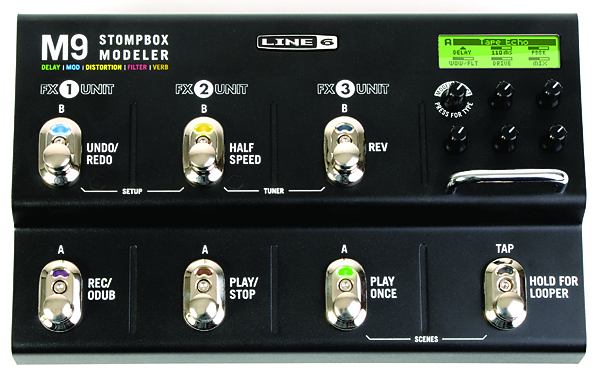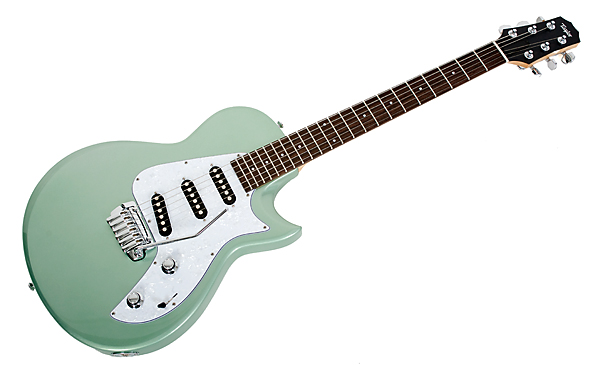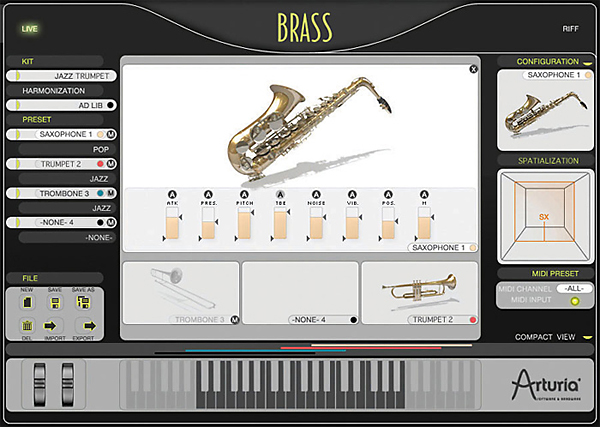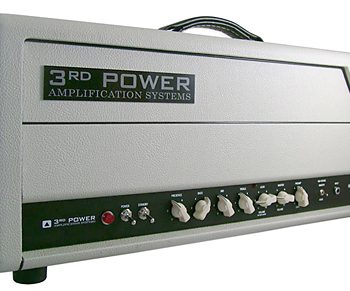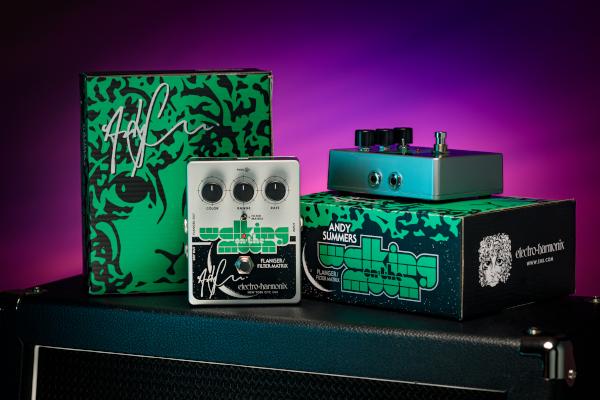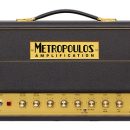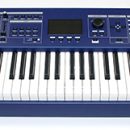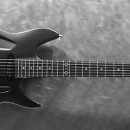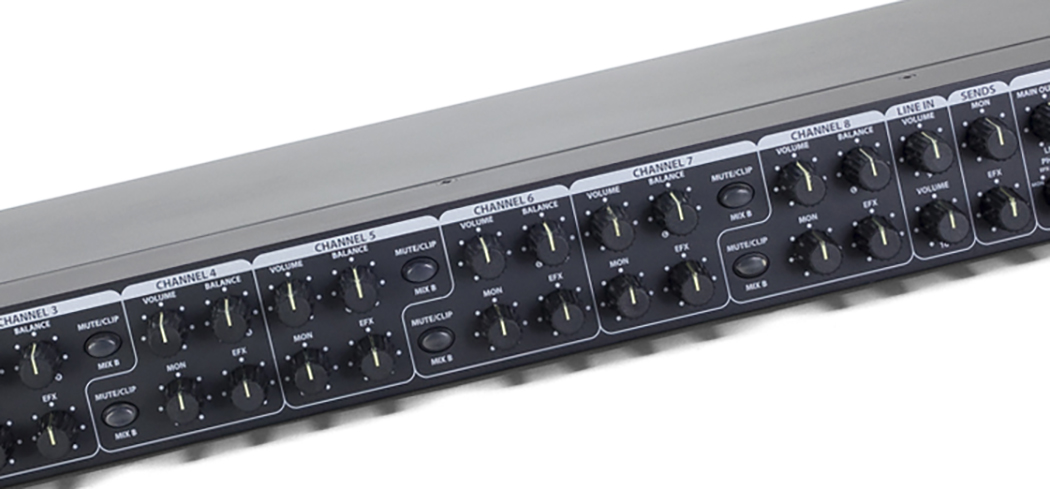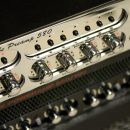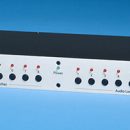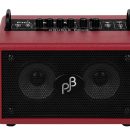Line 6’s line of stompbox modeling pedals are extremely popular with guitarists for good reason: they are built ruggedly and sound great. The M9 is a clever and compact multi-effect pedal that continues that tradition, providing direct access to numerous Line 6 effects, each instantly accessible from the multi-button footswitch.
In one easy-to-use package, not only does the M9 deliver simple access to many popular effects, but it adds numerous features not available in the standalone pedals. It can provide single pedal-like simplicity, or it can function like a multi-effects processor with instant recall of scenes containing effects from up to three virtual pedals.
| Category | Value | Rating |
| Features | 20% | |
| Usability | 25% | |
| Sound | 25% | |
| Documentation & Support | 10% | |
| Price | 20% | |
| OVERALL RATING = 3.3 3.6 stars or better: Outstanding, WIHO Award 3 stars or better: Worth considering 2 stars or better: Suited to specific needs 1 star or less: Not recommended |
||
Barely less capable than the larger and more costly M13, the M9 is a great choice for players who want to add a variety of high-quality effects to their existing pedalboard, or who just need a couple of standard effects from a single device in order to preserve a very simple rig setup.
If you’re searching for an intelligent pitch shifter, you’ll be very impressed by the quality of this effect in the M9. It’s good enough to be the only reason you purchase this pedal, but we’re sure you’ll end up using many other sounds once you put the M9 in your rig.
Features
The Line 6 M9 is a compact and rugged pedal. The metal housing is small enough that you can easily place the M9 on your pedalboard, but it requires 9V AC power (not DC) similar to other Line 6 pedals (so you’ll need to plan your power accordingly if you choose not to use the included power supply).
Effects in the M9 include an assortment from all of the popular Line 6 pedals: Distortion, Delay, Modulation, Filter, and Reverb. While the majority of users will operate this pedal in mono, players with more advanced rigs will love that the M9 offers stereo operation.
If you’ve built a home studio on a budget, Line 6 threw in a crazy feature you’ll appreciate: stereo inputs! Go ahead and patch the M9 into your home studio with full stereo input and output for processing far more than just electric guitar.

You can play up to three effects simultaneously — either Effect A or Effect B from each of the three columns. You can assign the same kind of effect to each pedal, so if you’re after three digital delays at the same time, or a multi-stage distortion, go for it!
Operation can be as basic as having three, two-button pedals sitting on a pedalboard, or the M9 can function more like a traditional multi-effects processor offering six Scenes, in which stepping on a single button calls up a saved combination of multiple effects. There are actually four banks of Scenes — for a total of 24 Scenes, but traditional (floor based) pedal guys will have to turn a knob to rotate through the banks to access all of the scenes (more on this just below).
There’s also a looper built in, providing up to 28 seconds of mono recording (standard speed) or 56 seconds in half speed. The looper runs in mono, regardless of your setup.
The M9 has Tap Tempo, which adjusts all time-based effects in use, and an onboard tuner. Additionally, the M9 features MIDI IN/OUT, and it will sync to MIDI Clock from an external source!
If you have a MIDI foot controller, you can control many features of the M9, including directly accessing all 24 scenes (via MIDI Program Change messages), bypassing the unit, setting tap tempo, and entering Tuner mode (via Continuous Controller messages).
A Mute Audio feature allows for silent tuning, assuming you’ve placed the M9 in front of your amp or in a serial effects loop.
The M9 has an optional True Bypass feature, which completely removes it from your signal path when no effects are enabled.
Up to two expression pedals can be attached to the M9, and you can assign them to control any parameter associated with an effect.
Usability
Using the Line 6 M9 takes some getting used to, but the basics are very easy. In fact, the more advanced you are, the more complicated it seems to be to use, while pedal purists and neophytes will have no problems with the basic operation.
 Line 6 M9 Stompbox Modeler DisplayIn its simplest operation, just step on a button to activate one of your six pedals. Depressing the first knob (in the top right quadrant of the pedal) selects the type of effect pedal you’re using; then twisting that knob selects the specific effect assigned to that pedal. For example, if you select the Delay pedal type with the push button, twisting the knob lets you choose the specific delay type such as analog w/modulation, stereo delay, reverse, etc. The other knobs correspond to values on the LCD display for changing effect settings. Twist to taste and you’re done. Effect settings are saved automatically, just as if you were twisting knobs on an analog pedal. If you’re used to programmable multi-effects processors, this simple task strikes you as somewhat unusual since you make changes but don’t do anything to write/save them.
Line 6 M9 Stompbox Modeler DisplayIn its simplest operation, just step on a button to activate one of your six pedals. Depressing the first knob (in the top right quadrant of the pedal) selects the type of effect pedal you’re using; then twisting that knob selects the specific effect assigned to that pedal. For example, if you select the Delay pedal type with the push button, twisting the knob lets you choose the specific delay type such as analog w/modulation, stereo delay, reverse, etc. The other knobs correspond to values on the LCD display for changing effect settings. Twist to taste and you’re done. Effect settings are saved automatically, just as if you were twisting knobs on an analog pedal. If you’re used to programmable multi-effects processors, this simple task strikes you as somewhat unusual since you make changes but don’t do anything to write/save them.
Keeping track of which effects are in use is straightforward, especially if you’re familiar with the other Line 6 modeler pedals. The footswitch buttons light up with colored LEDs that correspond to the particular effect in use. The light turns green when using delay, which corresponds to the green housing of a Line 6 DL4 pedal; the light turns blue to indicate using one of the modulation effects just like the blue-colored MM4 pedal; the light is purple to indicate the filter/FM4 effect; yellow for distortion (like the DM4); and orange to indicate reverb.
Effect routing is simple — you can place any effect in whatever sequence you prefer. But the signal routing path is always in series: input --> effect #1 --> effect #2 --> effect #3 --> output.
Our review unit shipped with old version 1.1 firmware, and since the current version 2.01 includes numerous new effects and refinements to the pedal’s operation, one of our first tasks was to update the pedal. Odds are good that if you pick up the pedal at retail, it may still have the old software running inside.
Unlike some of Line 6’s tabletop and rack-related POD gear, there is no built-in USB port, so in order to update the M9, you’ll need a MIDI interface on your computer. After connecting a pair of MIDI cables (In/Out) to our Digidesign 002r, we launched Line 6’s Monkey utility application (a free download from the Line 6 website if you’ve never installed it before with one of their other products).
The software made updating the M9 easy. After registering the pedal on the Line 6 website and launching Monkey, it detected the M9 connected to our 002r automatically and showed that the firmware was in need of an update. Clicking the Update Selection button and answering a few simple questions started the process of downloading numerous update files to the M9. Five minutes later, we had a “new” M9 stompbox modeler ready to go.
Scenes turn the M9 into a multi-effects pedalboard. They can be utilized in two different ways, each with some pros and cons. Think of Scenes as snapshots of your pedalboard — the M9 remembers which pedals/effects are active at the time you save the arrangement to one of the six buttons.
When we stepped on the two bottom-right pedals together, this called up the Scene selector, and then stepping on one of the six buttons recalled a specific pedalboard layout. Additionally, we could turn the Select knob prior to our button stomp to choose from four different banks of Scenes for additional saved settings. Line 6 created some default Scenes to showcase some possible multi-effect sounds as a starting point.
In the default Scene mode (momentary), once a Scene was recalled, we could turn effects On/Off or select new effects — our changes were saved automatically to that Scene memory location, and future recall brought back these settings. To select a new Scene, though, we had to repeat the procedure of stepping on the bottom-right pair of buttons first. Fortunately, there was an easier method of operation for live use.
Once we created all of our effects and saved a few scenes, we went into the M9’s Setup menu and changed the default Scene operation from momentary to latching. In this mode, each button called up our saved Scenes directly, and the display showed which Scene was selected (like selecting a preset on a multi-effects processor). We could select new Scenes just by stepping on one of the six buttons without having to do the double-button dance.
Tip: It wasn’t immediately obvious to us how to edit sounds when using the M9 in latching mode, since all of the pedals are functioning in an instantly-select-my-effect-setup mode. However, it can be done as follows: After selecting your scene, step on pedals FX3A and Tap to temporarily exit latch mode, tweak your effects to taste, and then step on FX3A and Tap to return back into latch mode.
Using the intelligent harmonizer was easy. We just used the controls below the display to select our key choice, scale, and the harmony interval — simple! Although there weren’t as many options for exotic scale types as are found in more elaborate dedicated rack harmonizers, we don’t think any rock, metal, or pop guitarist will find themselves limited.
We tried using the M9 in True Bypass mode, but preferred the default buffered mode. When used in True Bypass mode, there was an audible click whenever we turned an effect On or Off. Between that and the fact that we hate prematurely chopping off our reverb tails and delay repeats inadvertently (standard behavior for any true bypass effect device), we didn’t need this alternate configuration.
There are two connection points for expression pedals, and we had no trouble connecting a Roland EV-5 expression pedal and enabling it within the M9’s setup, assigning it to our choice of a few different effect-related settings.
Sound
The Line 6 M9 is filled with a ton of musical effects, and while every modeled effect can’t be a winner in our book of tone snobbery, there is a lot of great sounding stuff in here that our extremely picky readership will both enjoy using and be inspired by.
But before we talk about some of the specific sounds, we’ll talk about sound quality in general. The M9 is, overall, a very quiet pedal. We tested it with a few different amps — a Mesa/Boogie Road King II half-stack as well as an ENGL e580/850 rack-based stereo tube amp rig. Both amps offer a wide range of tones from crystal clear cleans to extremely high gain metal sounds, and we placed the M9 both in front of the input as well as in the effects loop (serial) of each rig.
Right away, the first decision you’ll need to make is whether you intend to use the M9 in front of your amp or in the effects loop. This has a huge impact on the quality of the tone, as many of the effects in the M9 sounded appreciably better to us when run in our effects loops, while other effects (distortion) are virtually unusable in a loop. Editor’s Note: The more elaborate Line 6 M13 pedal has an external preamp loop for popular “four cable” hookups, enabling you to route some effects front-of-amp and others into your effects loop.
Stereo operation sounded great for some of the effects, but since most players will be running the M9 into mono rigs, we spent the majority of time using the M9 with our Boogie rig and a few different guitars with various pickup combinations.
Happily, the M9 cannot be blamed for any “tone suckage,” as many players have experienced with some old or cheap gear. We could hear a very slight change to our signal passing through the M9 when our series loops were engaged, but this was the kind of subtlety you’d never notice as soon as one other musician started playing with you, or even just talked to you while you’re noodling around. Our sound never developed a “masked” quality, and complex chord voicings never got muddied as a result of our loop being engaged.
The distortion and compression effects (ala DM4 pedal) obviously sounded best in front of the amps. Most of our readers tend to rely on tube amps to generate their distortion, but stomp boxes still have their place in many players’ rigs for alternate distortion tones.
The Tube Drive effect, with the drive setting cranked, sounded great for delivering a vintage Marshall-like tone. It was very usable, and to our ears, didn’t sound like a pedal at all! We were also impressed by the Overdrive effect. With the drive setting on the lower side, this effect gave us a very good vintage rock n’ roll tone. The Facial Fuzz distortion was another inspiring effect. It had us playing “Revolution” from the Beatles almost immediately, though it wasn’t nearly as useful for channeling Hendrix.
The Screamer distortion sounded very thin and trebly, though, and wasn’t of any value to us. Heavy Dist had loads of gain for insanely heavy metal, but had a thin, solid-state quality to it. The Line 6 Dist effect was much better sounding, though still it didn’t compare to the distortion from a real tube amp, or even from the distortion models mentioned above that we were truly enamored with.
The compressors were just average, and a bit noisy when pushed. They were effective for adding sustain and raising quiet levels, but with limited controls, we couldn’t fine-tune them to the same degree as we can with some dedicated compressor pedals.
If we were going to implement an M9 in our rig, we would forget about the DM4-based effects (distortions, overdrives, compressors) and stick this pedal in our effects loop, because there were numerous great sounding effects to be found there.
Fans of the DL4 delay pedal will be very happy with the M9. It has the same fantastic analog delay with modulation that was one of our favorites when we reviewed that pedal, and because of the LCD display, it’s much easier to keep track of which types of delay sounds you’re using in the M9 than in the DL4.
Other delays, like the stereo delay and ducking delay, worked just as well as they had in the DL4, too. With the ducking delay, a concept borrowed from the famous TC Electronic 2290 studio delay, delay repeats get quieter, or “ducked,” behind fast passages and become more prominent during slower, sustained passages.
The chorus effects were excellent, and the analog chorus sounded great both on clean tones as well as with high-gain tones: great for lovers of that huge ‘80s lead guitar tone. The tri-chorus was notable, too, for its sound quality.
Tremolos — the Opto Tremolo in particular — sounded fantastic. All that pitch motion with no noise was a beautiful thing.
The phasers were great in some situations and disappointing in others. On our clean tones, the Phaser and Barberpole Phaser were beautiful, the latter delivering fantastic vintage effects (without the noise of vintage pedals), but when paired with high-gain amp tones, we found a metallic “clank” to these effects that rendered them disappointing. Flangers were pretty good overall, and the Jet Flanger was far more musical than some boutique pedals we’ve looked at that cost as much as the entire M9, but the 80A Flanger added too much dirt (almost a subtle overdrive) to the signal for our tastes.
The Line 6 MM4 Modulation Modeler pedal is packed with fantastic spacey tones, and the M9 inherrits a bunch of those. We loved Seeker, a glorious sounding step phaser or slicer-like effect. Throbber gave us a pulsing ‘60s sci-fi tone, and the synth effects were all highly playable. The Voicebox did a great job with vowel sounds, and we didn’t need a silly-looking tube to blow into! You could lay down background ambient tracks using some of these sounds and people would swear there’s a keyboard/synth player in your band.
Wah sounds were pretty basic and perfectly usable, but there were no advanced options for tweaking their sounds as we’ve found on some newer wah pedals. If you’re a fan of the classic Crybaby and Vox wahs, which have no options for tweaking the frequencies or Q, you may be quite happy with these sounds. For best results, use the M9 in front of your amp (instead of in the loop) if wah sounds are a priority for you.
The intelligent harmonizer sounded great. We were definitely not prepared for just how well it worked, as our expectation for any harmonizer under $1,000 was extremely low. This effect sounds as good as many of the familiar “pro” products, and if you’ve always wanted to make use of this effect but didn’t want to spend a ton for rack gear, we think you’ll be very happy. Bravo!
The M9 makes a great sounding reverb pedal. If your boutique tube amp lacks reverb, the M9 is all that you need for times when you need a little bit of space. The ’63 Spring, other springs, and plates, were all really fantastic sounding. And in the category of sounds that inspire like the MM4 collection, Octo and Particle Verb had us creating all sorts of cool ambient textures. Octo delivered synth-like ringing behind a cavernous echo ala The Edge, and Particle Verb created spacey volume swells without having to do it the old fashioned way.
Documentation and Product Support
Line 6 provides enough documentation to satisfy most gear junkies. For basic operation of the M9, the Pilot’s Handbook adequately describes use of the pedal. If you intend to make use of its advanced features such as using expression pedals or external MIDI control, there is an Advanced Guide downloadable from the Line 6 website that goes into much greater detail about all of the advanced features.
Additionally, Line 6 includes a booklet that takes an in-depth look at all of the classic equipment that was modeled for inclusion in their pedals — a very nice touch.
Price
The Line 6 M9 (MSRP $559.99) sells for just under $400, a very good deal for packing so many high-quality sounds into a rugged and compact pedal with an advanced feature set.
If you appreciate the simplicity of individual stomp boxes, the M9 will make a great addition to your collection of effects since there’s no real learning curve to master the basics. But if you require more flexible effect routing options (plus the ability to play up to four effects at once and a few other minor differences), you may want to check out the more elaborate M13.
Contact Information
Line 6
www.line6.com
| Evaluation Short-List |
|

